Samsung Q80D is a very versatile television. It’s definitely a piece of equipment that can easily adapt to the needs of both gamers and those looking for a device for everyday viewing. As for the former - namely gamers. Thanks to HDMI 2.1 support, a 120 Hz refresh rate, and low input lag, it makes playing on console or PC pure pleasure. Additionally, the Game Bar feature allows for quick adjustments without the need to exit the game – a small thing, but it makes a difference. It’s also worth mentioning a fantastic feature in the form of an efficient motion smoother that works well in games. It gives the impression that playing on such a television adds a few FPS, thus providing an advantage in the game. During everyday use, the Q80D performs very well too. The Tizen system offers access to popular apps such as Netflix, Prime Video, and Disney+, so nothing is lacking here. The high brightness of the screen ensures that the television performs very well even in well-lit rooms. A nice and interesting addition is the solar remote, which not only does not require battery replacements but also allows control of other devices (e.g. set-top boxes, consoles, soundbars). When it comes to picture quality, the Q80D has a lot to offer. Although it lacks Dolby Vision support, after calibration, the colours look fantastic, and the contrast and black level thanks to FALD technology (full array local dimming) impressed us greatly, considering the television's segment. Thanks to the VA panel enhanced with quantum dots (QLED), the colours on the Q80D can look truly excellent. Watching movies or series in the evening is a real pleasure – especially if we care about good details. However, there are little things that might be bothersome. The lack of a recording feature is a certain limitation, although it may not be a problem for everyone. Another obvious issue will be its viewing angles. These are typical results for this type of panel, so one must reckon with the fact that at the cost of great blacks, the Q80D simply performs average when looked at from the side. Nevertheless, the Samsung Q80D is a great television that performs well in every situation. It offers excellent picture quality, many useful features, and solid build quality for its price range. A few minor shortcomings, however, do not take away its charm, as overall it’s a model that will comfortably meet the expectations of most users – both those who game on consoles and those who simply enjoy evening screenings with good visuals.
- Matching (Score)
- Our verdict
- TV appearance
- Where to buy
- Contrast and black detail
- HDR effect quality
- Factory color reproduction
- Color reproduction after calibration
- Smoothness of tonal transitions
- Image scaling and smoothness of tonal transitions
- Blur and motion smoothness
- Console compatibility and gaming features
- Input lag
- Compatibility with PC
- Viewing angles
- TV efficiency during daytime
- Details about the matrix
- TV features
- Apps
- Playing files from USB
- Sound
Samsung QLED Q80D vs Samsung QN85F
Direct compare
Q80D
QN85F

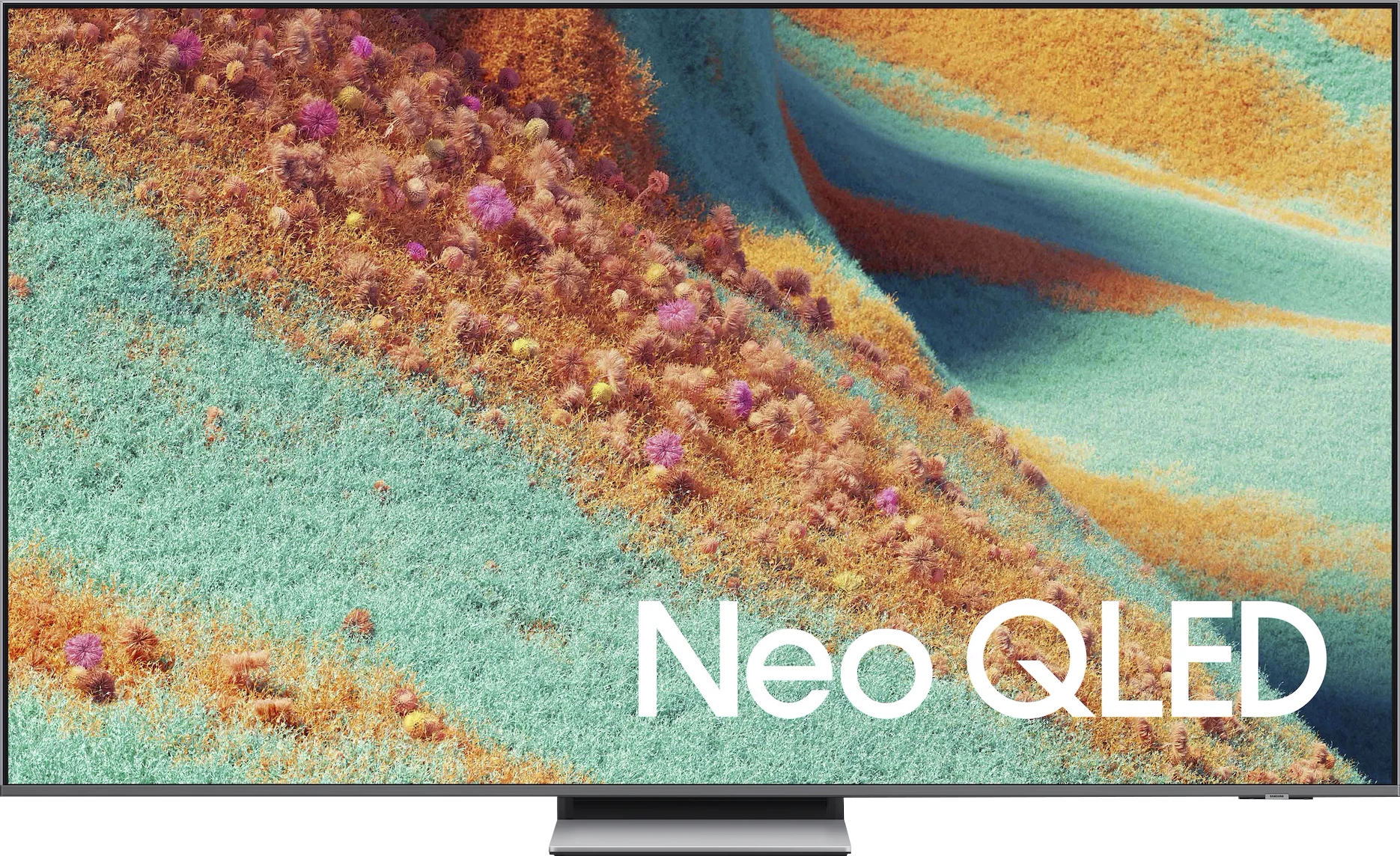
Panel type: LCD VA
Resolution: 3840x2160
System: Tizen
Model year: 2024
Complete the survey to find out the result

Panel type: LCD VA
Resolution: 3840x2160
System: Tizen
Model year: 2025
Complete the survey to find out the result

Overall rating
7.1
7.6
Movies and series in UHD quality
6.8
7.5
Classic TV, YouTube
6.7
7.2
Sports broadcasts (TV and apps)
6.6
7.0
Gaming on console
8.7
8.7
TV as a computer monitor
7.6
8.4
Watching in bright light
6.0
6.9
Utility functions
8.0
7.3
Apps
8.7
8.7
Sound quality
6.6
7.6
Complete the survey to find out what fits your preferences
Advantages
Great choice for gamers - lots of functionality, low input lag, 120Hz
High brightness of the panel - good performance during the day
Good blacks and contrast - VA panel with local dimming
Excellent tonal transitions
Advanced "Tizen" smart system
Pleasant sound from the built-in speakers
High HDR brightness (even 1700–1800 nits)
Very good contrast and deep blacks
2 times the number of dimming zones compared to its predecessor (55")
144 Hz panel supporting VRR and ALLM
Unique Game Motion Plus feature – a distinctive smoother for gaming
Low input lag
Satin finish on the panel works great during the day combined with high brightness
Advanced Tizen platform: with AirPlay, SmartThings, and a convenient solar remote
Well-designed stand. Hybrid – can be a central base or side legs
Solid sound with pleasant bass and Dolby Atmos support
Disadvantages
Average viewing angles
No recording function
No DTS (may hinder connection to home theatre)
No support for Dolby Vision and DTS:X
No recording function from built-in tuners and PiP
Issue with HEIC files in the player
No proper HGiG* support in game mode
*This seems to be an update bug that we hope Samsung will fix quickly. We're keeping an eye on the situation for you.
Our verdict
The Samsung QN85F is a television that perfectly demonstrates the purpose of the Neo QLED line. On one hand, it has everything that a modern user expects – high brightness, excellent fluidity, and full support for gamers. On the other, it’s still an LCD, so it’s a technology that comes with certain compromises. The question is whether these compromises actually hinder everyday use? In practice, it’s hard not to be impressed by how the QN85F performs with HDR movies. A brightness level of 1700–1800 nits makes watching dynamic scenes truly feel like experiencing the “HDR spark,” which many competitive televisions lack. The lighting effects in films or series can literally overwhelm with intensity, yet the television doesn’t lose detail and doesn’t turn the entire image into a washed-out blob. This is precisely the kind of spectacular experience that viewers investing in a new screen are searching for. Gamers also have reasons to be pleased. (Well, maybe apart from one shortcoming related to HGIG.) It supports 144 Hz, variable refresh rate VRR, and automatic game mode ALLM. This is already a must-have set in this class, but Samsung goes further by adding a unique feature called Game Motion Plus. Thanks to this, the image in games becomes smoother, resembling the operation of a motion smoother in films, but without a noticeable increase in latency. This solution truly sets the QN85F apart from the competition. On top of all this, there’s everyday convenience. The Tizen system is fast, stable, and full of apps that we actually use – from Netflix to Apple TV to YouTube and Disney+. There’s also AirPlay support, a comprehensive SmartThings platform, and a remote that, instead of being intimidating with dozens of buttons, offers simple navigation and quick access to the most important functions. This makes the QN85F a television that you just want to reach for every day. Sure, you can point out the shortcomings. There’s no Dolby Vision, no USB recording, and the viewing angles typical of a VA panel won't impress if you sit at a steep angle. But all of this pales in comparison to how versatile and refined the QN85F is. During the day, it handles bright rooms excellently, in the evening it delivers cinematic emotions in HDR, and in games, it provides smoothness and low input lag that other models could envy. Overall, the QN85F is a television that not only successfully continues the value-for-money tradition of its predecessor, the QN85D, but even expands it with several strong points. It’s equipment that’s hard to describe in any other way than as a “safe choice” – one that won’t disappoint in any scenario and is very likely to meet the expectations of even the most demanding users.
TV appearance




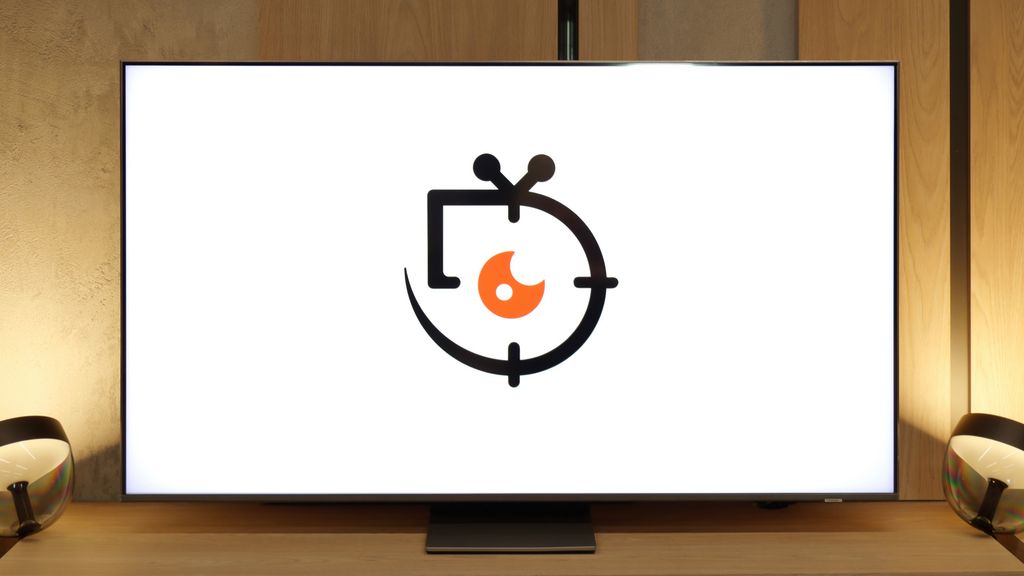
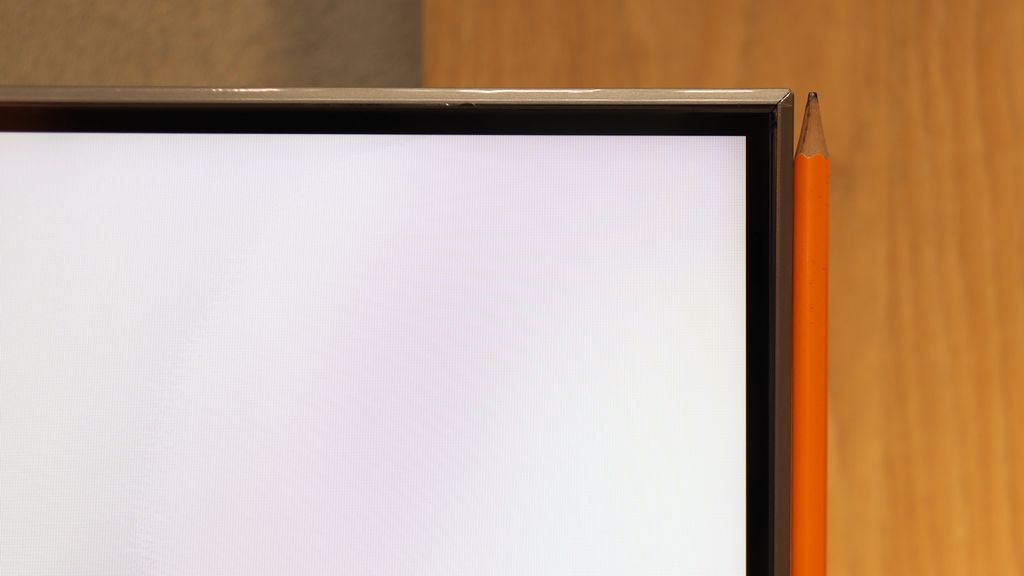
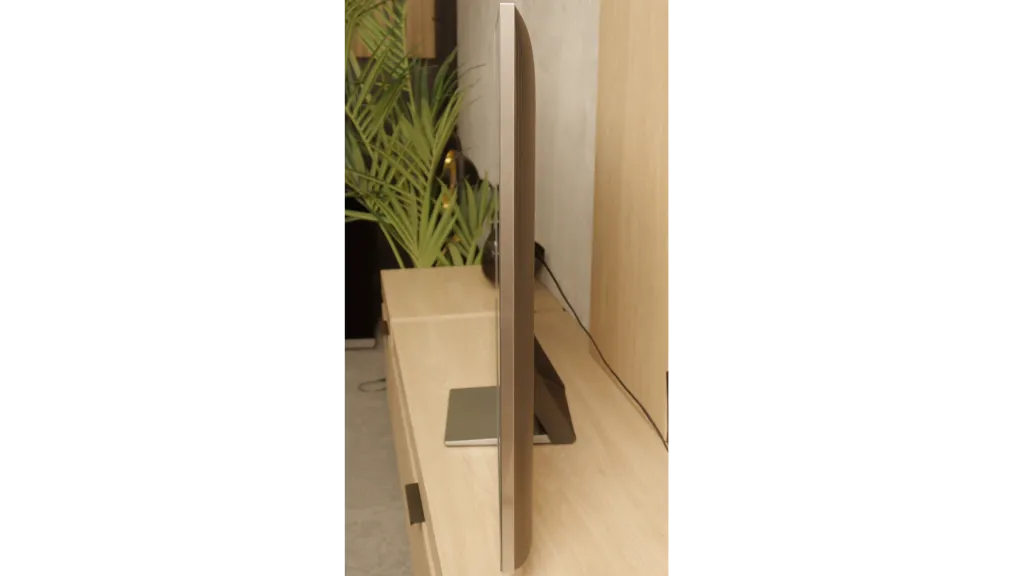
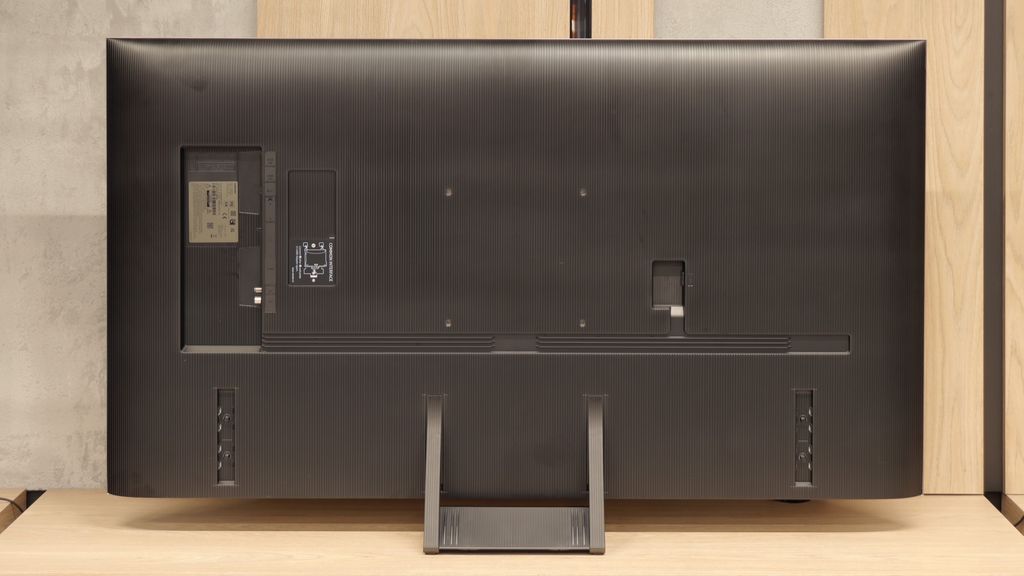
Contrast and black detail
6.7/10
7.5/10
Local dimming function: Yes, number of zones: 100 (10 x 10)
Local dimming function: Yes, number of zones: 240 (20 x 12)
Contrast:

Result
37,350:1

Result
8,850:1

Result
20,350:1

Result
4,300:1

Result
3,800:1

Result
101,800:1

Result
18,650:1

Result
47,050:1

Result
9,700:1

Result
4,350:1
Halo effect and black detail visibility:


The Samsung Q80D television is equipped with a VA panel, which immediately affects the difference in contrast and black reproduction compared to IPS panels. VA panels offer significantly better contrast and deeper blacks, while IPS panels have better viewing angles but poorer contrast. For the 55" model, the television has 100 local dimming zones, and it should be noted that this number may vary depending on the screen size. Thanks to local dimming, blacks look good, but it's worth mentioning that the algorithm of this technology, combined with a limited number of zones, can sometimes go a bit "haywire." Bright objects can be dimmed to achieve better blacks. During testing in a scene from the film Oblivion, the lights merged into one blot, regardless of the dimming settings, showing the limitations of this technology. In the movie Sicario 2, large dimming zones were particularly noticeable, for example, with small helicopter lights, indicating how large the areas controlled by a single dimming zone are. Despite these imperfections, the local dimming technology still offers significantly better picture quality than televisions without this feature or with edge lighting. With the ability to completely turn off individual zones, the television can provide a noticeable boost in brightness in selected areas, which can give the image a cinematic effect, especially in dark rooms.
Our editorial team received a 55-inch model with a VA panel. In the case of NeoQLEDs, which are TVs with Mini-LED backlighting, size is crucial because the larger the screen, the more local dimming zones it can have. This directly translates to higher contrast. In the version we tested, we counted as many as 240 dimming zones, which is twice as many as last year's QN85D. Theoretically, such an increase should deliver an equally impressive improvement in contrast. Unfortunately, practice showed otherwise – the QN85F delivers results very close to its predecessor. Yes, in some scenes with a lot of black or in areas where details in highlights are crucial, there is a noticeable improvement, but it is not proportional to the number of zones. The Mini-LED technology can be temperamental, and sometimes delicate halos appear around small, bright objects. This is a typical compromise that one must accept with such a solution. However, this doesn’t change the fact that the contrast in the QN85F is at a very high level and will easily satisfy most users, even the more demanding ones. However, we have the impression that Samsung could fine-tune the algorithms controlling the dimming because we know from experience that they can perform really well in other models.
HDR effect quality
5.8/10
6.9/10
Luminance measurements in HDR:

Result
927 nit

Result
423 nit

Result
612 nit

Result
242 nit

Result
856 nit

Result
1248 nit

Result
860 nit

Result
1093 nit

Result
465 nit

Result
957 nit
Scene from the movie “Pan” (about 2800 nits)


Scene from the movie “Billy Lynn” (about 1100 nits)


Static HDR10


Dynamic: HDR10+
Dynamic: HDR10+


HDR luminance chart:
Samsung QN85F
HDR luminance
Samsung QLED Q80D
HDR luminance
In the context of HDR, the Samsung Q80D television, as expected, achieves very positive brightness results in the tested movie scenes, where the frame is filled with light, reaching values from 600 to 900 nits, allowing for a great juiciness of the image. Such results enable the user to feel the difference between HDR and SDR quality. Unfortunately, problems arise in situations where small light effects occur against a dark background. In such cases (e.g., the 4th test screen from the film Sicario 2), a noticeable drop in brightness is observed, which is caused by the large size of the dimming zones used here. This limitation, combined with the dimming algorithm, affects how the television handles small bright elements on a dark background. At that point, we may experience an undesired lack of brightness, and the HDR effect resembles that of SDR.
Although more than twice the number of dimming zones compared to its predecessor did not result in a spectacular leap in black levels and contrast, we definitely felt it in the HDR effect itself. The QN85F is up to 50% brighter than last year's model and it makes a huge impression in dynamic scenes. Peak brightness can reach almost 1700–1800 nits, which is an impressively high result for this Mini-LED class. The best part is that almost regardless of the scene being watched, the HDR effect remains strong and vibrant. In four out of five test scenes, brightness was maintained around 1000 nits, a level that in most cases allows the viewer to feel the true magic of this format. Of course, in scene number 4 from the film Sicario 2, the limitations of Mini-LED technology become apparent – the brightness of the helicopter's subtle light drops to around 500 nits. This isn't an outstanding result, but it is still much more acceptable than last year's model. Samsung deserves applause for the dramatic improvement in brightness with the QN85F compared to its predecessor. However, there's a certain trend visible in this year's televisions – the manufacturer has worsened colour gamut coverage. Although the QN85F has a QLED panel, its result at around 90% DCI-P3 is average, and in the most demanding films, it may lead to less vibrant colours than its predecessor. Despite this drawback, the overall HDR effect is at an excellent level and truly makes a big impression in this class of devices.
Factory color reproduction
6.8/10
4.8/10


Factory Mode
After calibration


Factory Mode
After calibration
In "Filmmaker" mode, which is the best choice right out of the box, the Samsung Q80D television shows solid colour reproduction. For SDR content, a noticeable drop at the start of the gamma curve suggests that details in dark scenes may be less clear, affecting the overall viewing experience. Regarding white balance in SDR content, while generally correct, significant drops in blue at screen coverage above 70% can result in less natural shades in both bright and dark scenes. Users may notice that some blue elements in the image may appear less vibrant, and the overall colour will have a warmer hue.
In HDR content, the EOTF curve being above the reference line for most of the time indicates that the television may struggle to accurately reproduce brightness and details in the brighter parts of the image, which can be detrimental for the viewer. It is also worth noting the significant drop at the start of this chart, indicating that the television has difficulty reproducing brightness in the darker parts of the image, as seen in the contrast and black test, where several scenes were unable to show the full capabilities of the television’s brightness. In terms of its white balance, the initially good performance on the graph is promising, but the steep decline in red, coupled with a significant increase in blue, can lead to inaccuracies in reproducing some skin tones and other key colours. This phenomenon may be noticeable to viewers in scenes where colour details are crucial.
Samsung QN85F offers several preset picture modes, but out of the box, the television starts in 'Eco' mode. We could almost end the discussion here, as using this setting on such a model makes little sense – the picture is washed out, unpleasant, and far from what we expect from a television of this class. Therefore, we conducted our tests in the best available mode, which is Filmmaker mode. Its purpose is to faithfully reproduce what the directors saw during filming, and indeed, it is the setting that performs best among all factory options. However, this doesn't mean it's free from flaws.
Both in SDR and HDR, the QN85F prominently highlighted warm colours. This was due to a lack of white balance, where the blue colour was noticeably absent. Additionally, the image was sometimes overexposed – both the gamma brightness characteristic and the EOTF curve indicated that the television has a tendency to blow out scenes. In SDR, colour reproduction errors (Delta E around 4–5) were still acceptable, but in HDR, the inaccuracies became quite significant and clearly deviated from what the creators intended to show us. Fortunately, Samsung provides a wide range of calibration tools in its televisions, so – as always – we proceeded with professional calibration to see how much could be improved.
Color reproduction after calibration
8.1/10
8.5/10




The movie mode after calibration looks significantly better than the one you see right out of the box. Samsung offers an advanced range of calibration tools in its televisions. Among them are 2- and 20-point greyscale adjustment and CMS (Color Management System). Both in HDR and SDR mode, white balance has improved significantly, although there are slight errors at the end of the graph for HDR content. Contrast has also been greatly improved, and the gamma curve responsible for SDR shows better results. However, when it comes to HDR, the EOTF curve on the television appears to be at an ideal level at first glance. However, when we dig a bit deeper and enable the EOTF graph while watching films, we may notice that all the lines of the curve are above the reference line. You could even say that the television is "cheating" when playing film material. Such a situation, where the EOTF curve is above the reference line, causes the screen – although it may appear brighter, which some users might find appealing – to lose detail in the darker parts of the image. In practice, this means that in scenes with a lot of shadows or dark elements, the television is unable to accurately render the details that should be visible.
After calibrating the movie mode, we managed to tame the colours in both modes almost to perfection – most of them did not exceed an error value of 3, which is the threshold of perceivability by the human eye. The image became more natural, fuller, and at the same time free of the overexposure that was noticeable right after taking the television out of the box. This demonstrates the significant potential that lies within the QN85F and how well it responds to precise settings. However, this does not change the fact that certain technological barriers cannot be overcome. Despite the enormous benefits of calibration, there are still limitations to the panel itself. Although the number of dimming zones has doubled compared to its predecessor, the algorithms controlling the backlighting can manipulate brightness in their own way. Sometimes this leads to slight colour inaccuracies or subtly visible halo effects around bright objects. Nonetheless, the viewing experience after calibration is really enjoyable and shows how good a screen the QN85F can be if we just take a moment for the right settings.
Smoothness of tonal transitions
8.8/10
9/10












The tonal gradation on the Samsung Q80D television is excellent and can be considered one of its strong points. Even in the most demanding scenes from the films we tested, it performs superbly. Any potential issues with smoothing transitions in colours are minimal and subtle. The average viewer is unlikely to notice them, which translates to an overall positive visual experience in everyday use.
Minor colour errors are often practically unnoticeable; it is the fluidity of tonal transitions that is a category that even a less experienced viewer will pay attention to. Unfortunate stripes and artificial lines can completely ruin the perception of the image. Fortunately, the QN85F handles this aspect almost perfectly. Gradients are smooth, transitions between colours are seamless, and no artificial lines or distinct boundaries separating hues appear on the screen. The image remains consistent, and nothing distracts our attention from the content. Only in very extreme conditions did we notice slight issues in the grey palette, but this is a flaw typical of most televisions and it's hard to consider it a serious drawback. In practice, while watching films, we encountered no problems.
Image scaling and smoothness of tonal transitions
7/10
7.5/10
Smooth transition function


Image without overscan on the SD signal


Samsung Q80D performs very well with low-quality materials. The noise reduction works on the principle of gentle gradation, making it very effective in smoothing out unwanted image disturbances. Unfortunately, this same effectiveness also causes it to blur elements that shouldn't be smoothed, such as film grain. For those who prioritise a plastic, smooth image, this can be seen as a significant advantage, especially with lower-quality content.
In terms of image scaling, Samsung Q80D stands out positively in this aspect, significantly enhancing the viewing comfort. The TV handles the conversion of lower-resolution materials, improving their quality and details. For example, in the attached image featuring a model, there are no visible artefacts or excessive fraying of branches, which demonstrates advanced image processing technology.
Although the native tonal transitions on the QN85F perform excellently with 4K content, we don't always have to deal with the highest resolution material. This is where how the TV handles upscaling and digital image processing becomes crucial. This process is managed by Samsung's proprietary processor – AI NQ4 Gen2. In practice, it works very effectively. If visible colour banding or other undesirable phenomena appear on the screen, for instance with content from YouTube, they can easily be smoothed out using the "noise reduction" feature. Set to medium, it improves tonal transitions while not overly blurring desired details. However, it should be noted that – like in most Samsung TVs – this feature heavily interferes with film grain. Therefore, during movie screenings, it’s wise to use it cautiously to avoid losing the natural character of the image.
The upscaling itself looks very good. Test materials in lower resolutions were displayed sharply and clearly, with a lot of details. The only drawback remains the issue with overscan, which cuts off the edges of the screen. In most situations, this isn't noticeable, but with very old materials below HD quality, there may be instances where a fragment of the image from the left side gets slightly cut off.
Blur and motion smoothness
7.3/10
7.7/10

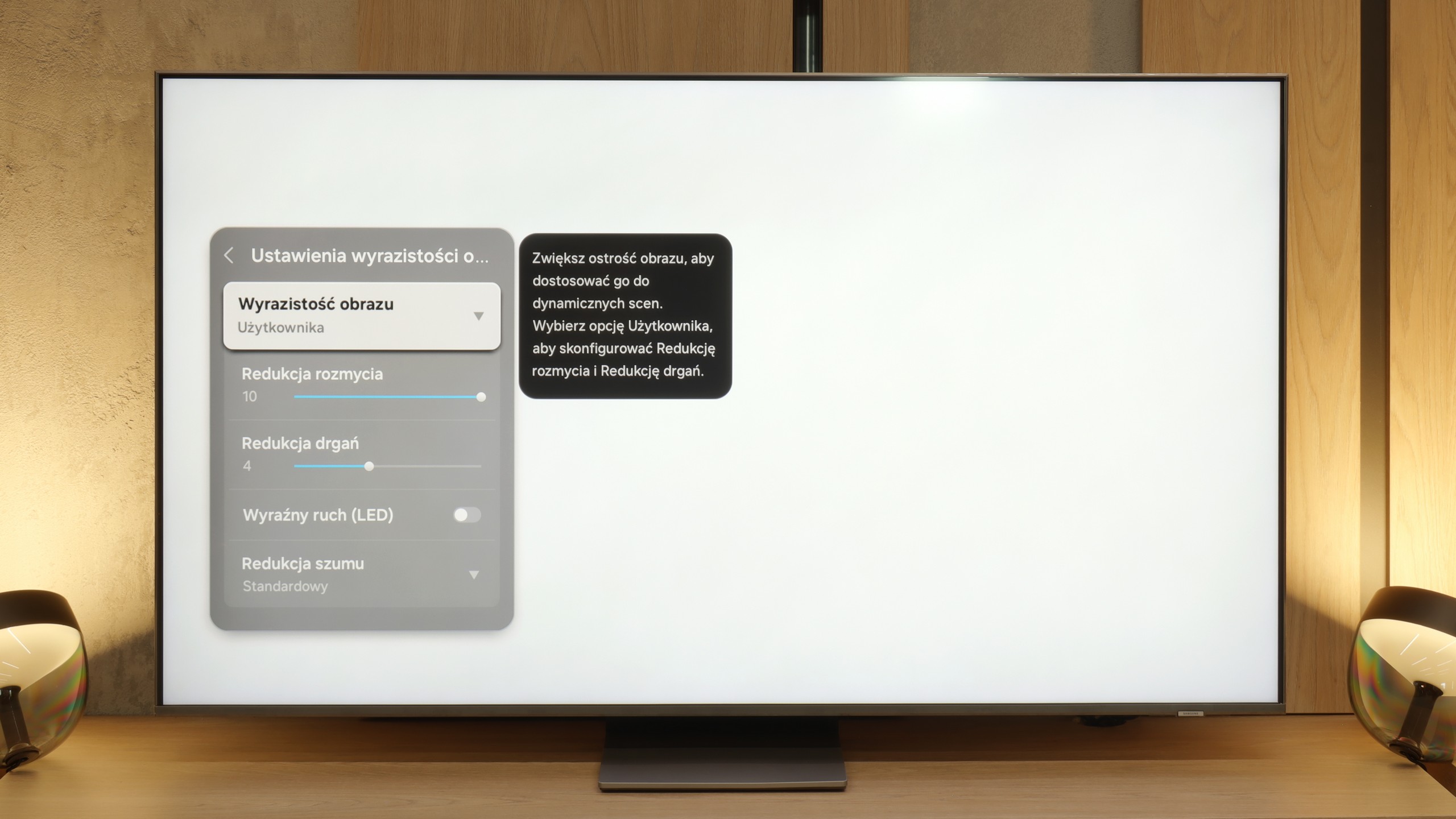
Blur (native resolution, maximum refresh rate):




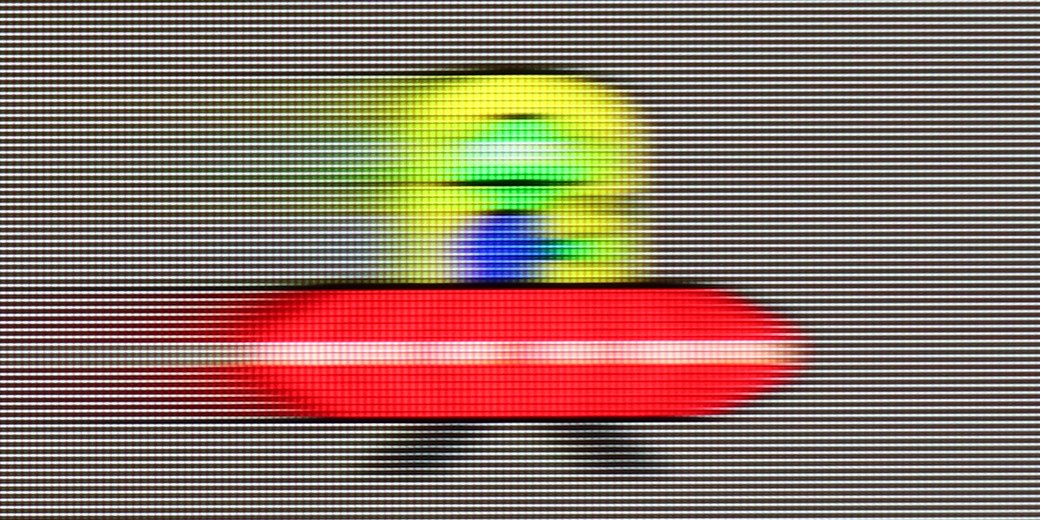
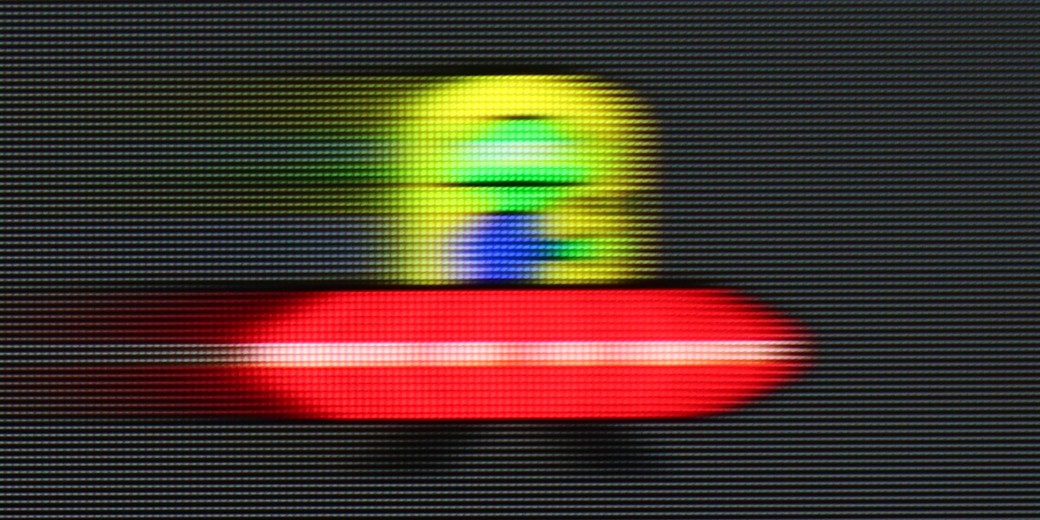
Blur (BFI function enabled):
Image flickers in this mode



Image flickers in this mode



Smużenie ():
Smużenie (4K@144Hz):

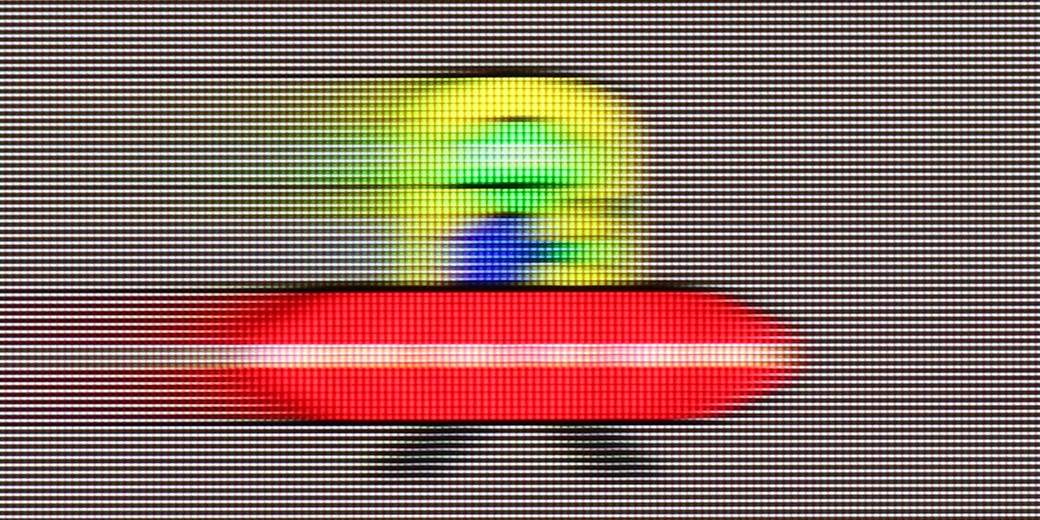
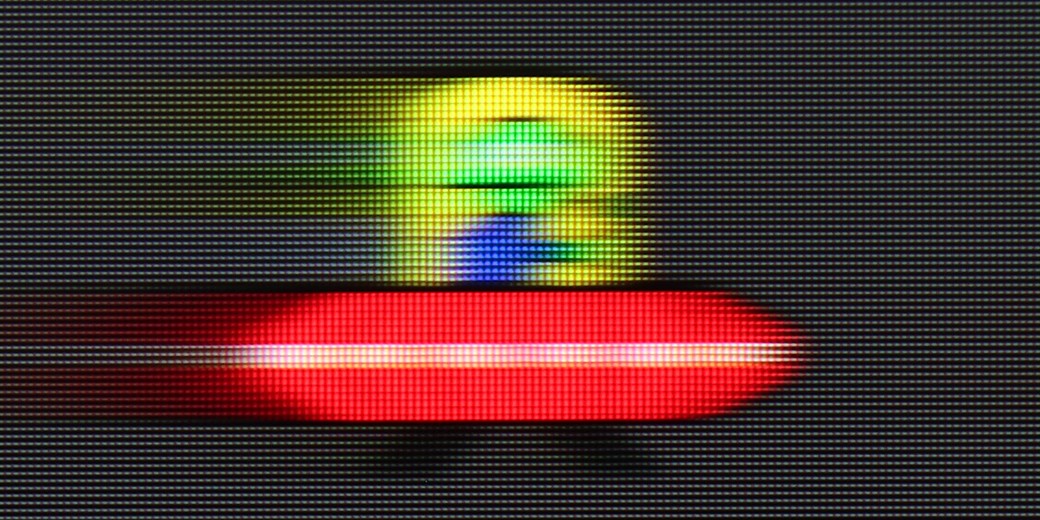
The Samsung Q80D television stands out very positively in terms of motion fluidity and minimizing blur, mainly due to the 120Hz panel and above-average panel response time. Users have two options for adjusting fluidity: "Motion Smoothing," which allows for adjustments in a 10-step scale, and "Blur Reduction," particularly effective at higher refresh rates, improving the sharpness of fast-moving objects. In the UFO test, there is no blurring behind the moving object, and the image is not cloned forward, indicating the absence of an overshoot effect.
Motion blur and fluidity of movement in the QN85F is a topic worth discussing further because the TV is equipped not with a standard 120 Hz panel but with a 144 Hz one. The extra hertz will mainly be appreciated by PC gamers, but the very fact of having such an option can be seen as a nice addition and a sign of the times – it's hard to complain about the trend of faster panels since in practice, each of us would like the picture to be as smooth as possible. However, the most important thing is how the TV performs with typical 120 Hz refresh rates – in the case of consoles, sports, or films recorded at 24 or 30 frames per second. And here, the QN85F performs really well. In films, you can easily adjust the character of the picture thanks to the "image clarity" feature, where you'll find two control sliders. Key in the case of screenings is the one responsible for reducing motion judder. Lower values give the image a more cinematic character with preserved "frame-ness," while higher values lead to strong smoothing, reminiscent of television theatre.
Console compatibility and gaming features
9.5/10
8.2/10
- ALLM
- VRR
- VRR range48 - 120Hz48 - 144Hz
- Dolby Vision Game Mode
- Correct implementation of HGIG
- 1080p@120Hz
- 1440p@120Hz
- 4K@120Hz
- Game bar

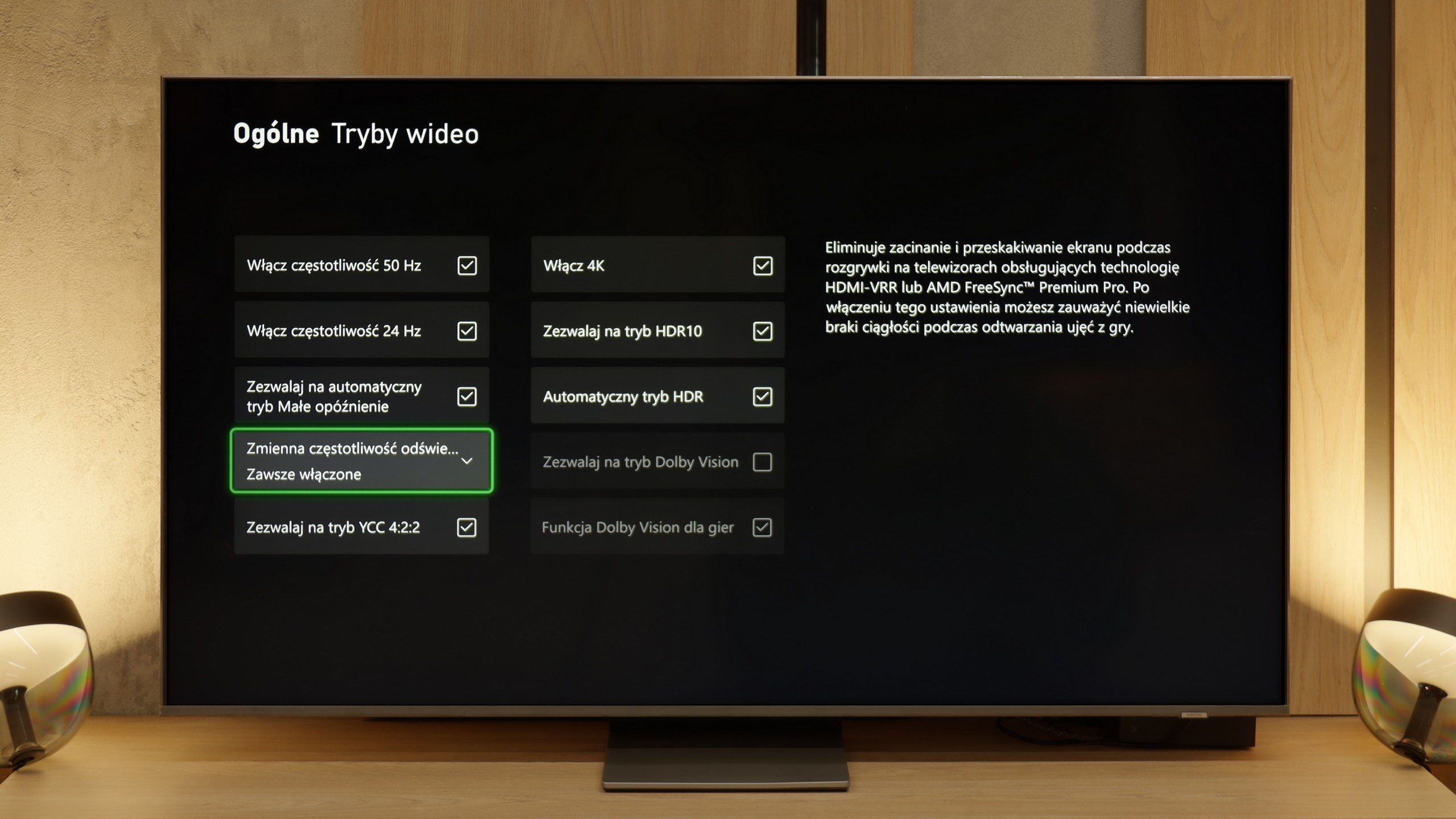

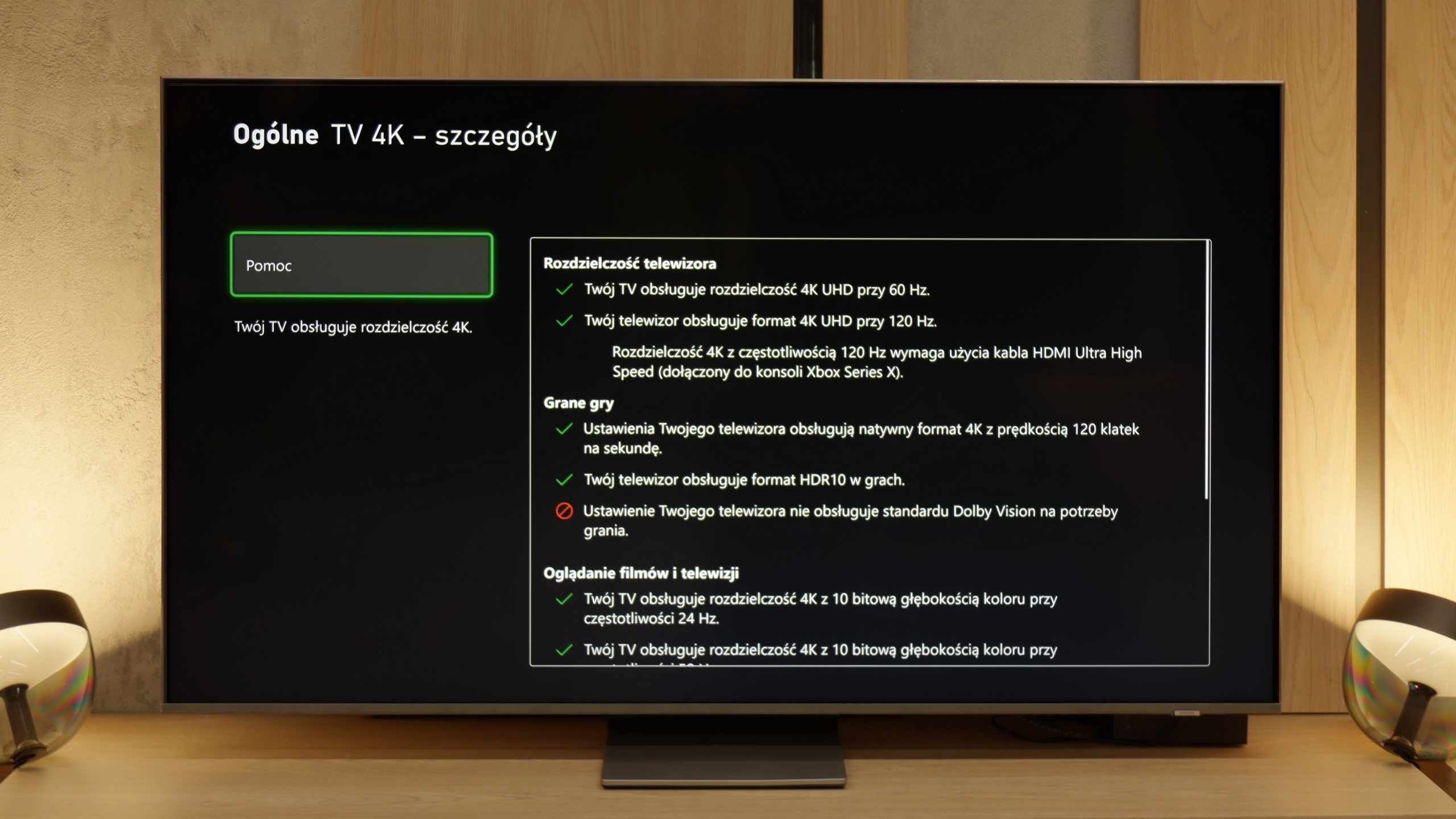

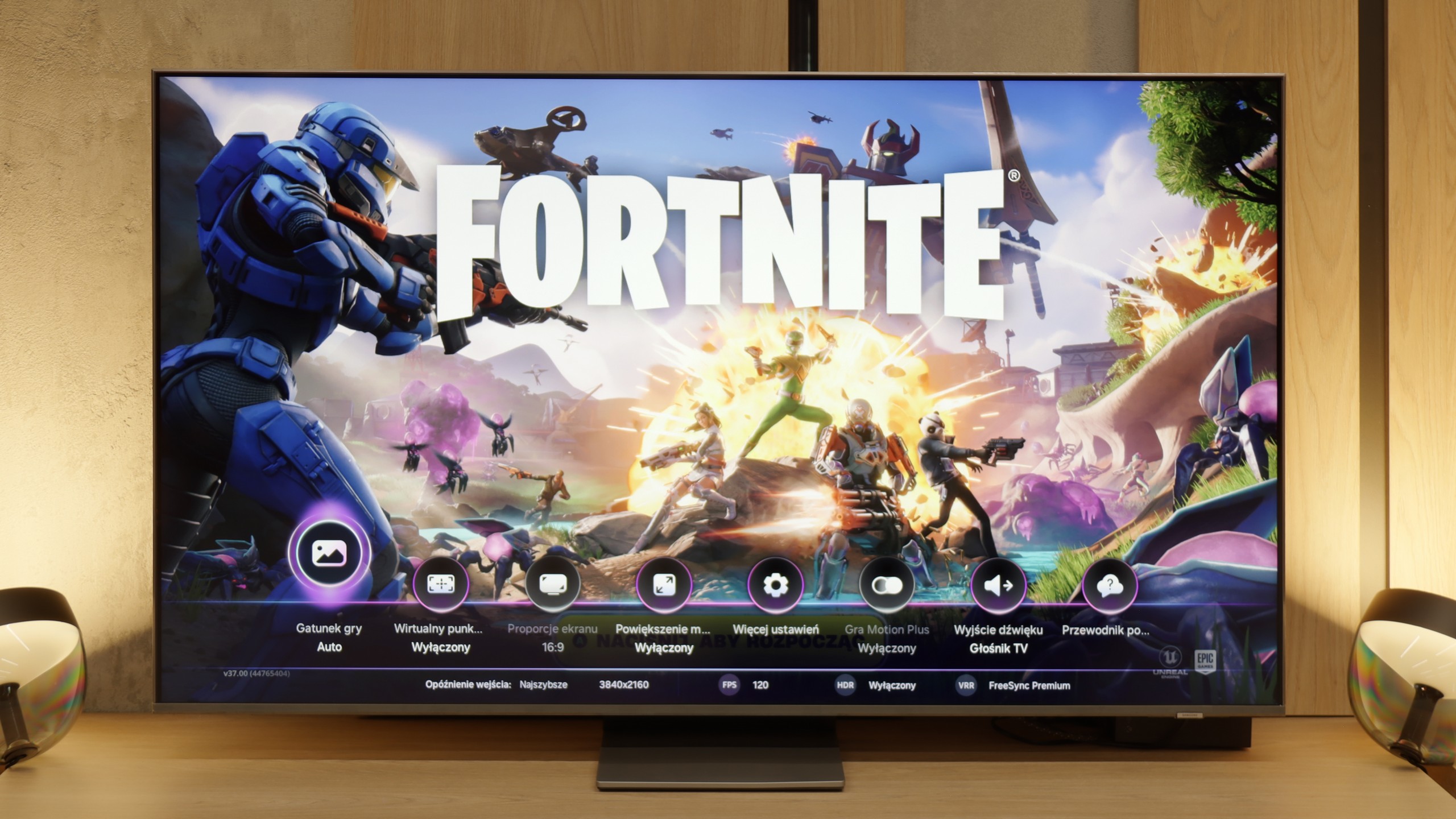

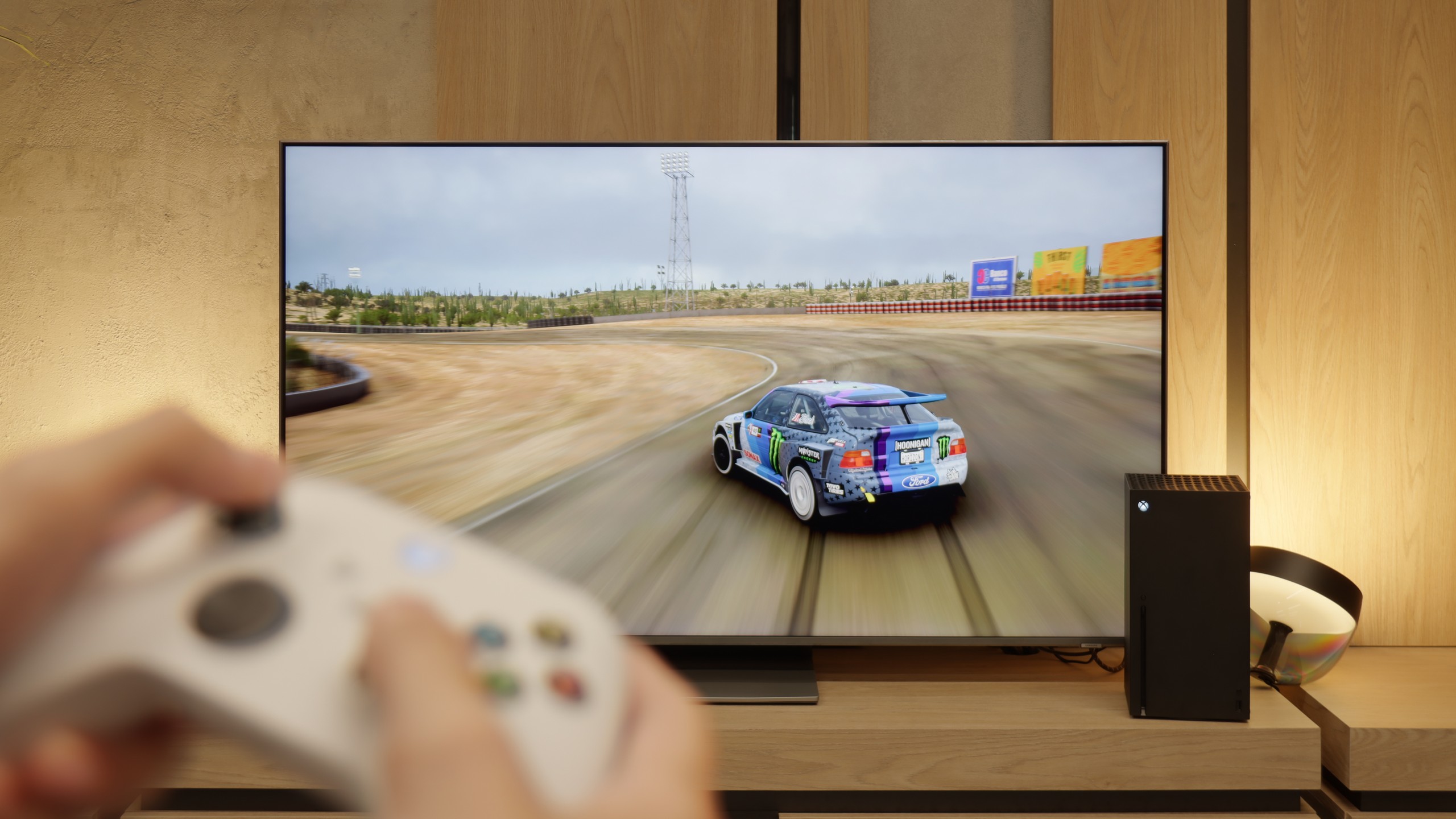
The Samsung Q80D TV is a real gem for gamers. It is equipped with four HDMI 2.1 ports, which is a rarity, especially in this price range. This allows users to enjoy features such as ALLM (Auto Low Latency Mode), VRR (Variable Refresh Rate), and 120Hz at 4K resolution. These features ensure smoothness and responsiveness of the image, which is a key aspect during dynamic gameplay. The TV also supports HGIG (HDR Gaming Interest Group), enabling optimal HDR content display in games. Additionally, it comes with a Game Bar, providing quick access to gaming settings. Users with Nvidia graphics cards will also be pleased with the implementation of G-Sync. This feature eliminates stuttering and screen tearing. The only downside is the lack of support for Dolby Vision, which may be disappointing for users looking for that HDR format. It's also worth mentioning that since 2022, thanks to the collaboration with Microsoft, Samsung TVs offer the Xbox Game Pass app, allowing for cloud gaming. This is an added bonus for gamers who want to take advantage of a wide library of games without needing a console.
The Samsung QN85F makes a fantastic impression from a gamer’s perspective. It features four HDMI 2.1 ports, so we can easily connect multiple devices at the same time. There’s also Variable Refresh Rate (VRR) to prevent screen tearing, as well as Auto Low Latency Mode (ALLM), which allows the TV to automatically switch to the appropriate settings when we start the console. Additionally, it supports refresh rates of up to 144 Hz – something that PC gamers will particularly appreciate, but the mere fact that this option is available shows that Samsung is committed to full support for gamers. The Game Bar panel also deserves praise. It provides a quick overview of key parameters – from frame rates to refresh mode, and even shortcuts to picture settings. Instead of sifting through the entire menu, everything is at our fingertips, which proves to be really convenient in practice. However, the most interesting addition is the Game Motion Plus feature. It’s essentially a motion smoothing function, brought into the gaming world. When activated, the picture becomes smoother, sometimes it even looks like we’ve gotten a few extra frames, and importantly – the response delay doesn’t increase enough to hinder gameplay. This solution truly sets Samsung’s 120Hz TVs apart from the competition.
The only serious downside remains the lack of proper HGiG support. This standard is responsible for accurate tone mapping in HDR games, which ensures that brightness and contrast are displayed according to how creators intended. Without HGiG, we have to manually adjust brightness, which doesn’t always yield perfect results. The feature was available in previous models, but it disappeared from the QN85F after one of the updates. We hope that Samsung will quickly rectify this issue, and we will be keeping an eye on whether they succeed.
Input lag
9.8/10
9.8/10
SDR
HDR
Dolby Vision
What more can I say, the input lag at this level is simply outstanding. It's hard to achieve a better result that will satisfy gamers! The television performed excellently at every tested resolution and refresh rate, both in SDR and HDR.
The input lag in the QN85F is exceptionally high. With content at 120 or 144 Hz, the values often hovered below 10 ms, which is an outstanding result. Naturally, when playing at 60 Hz, the lag doubles, but it still remains low enough to be practically unnoticeable. This makes the QN85F suitable for both dynamic e-sports games and more relaxed console titles.
Compatibility with PC
7.6/10
8.4/10

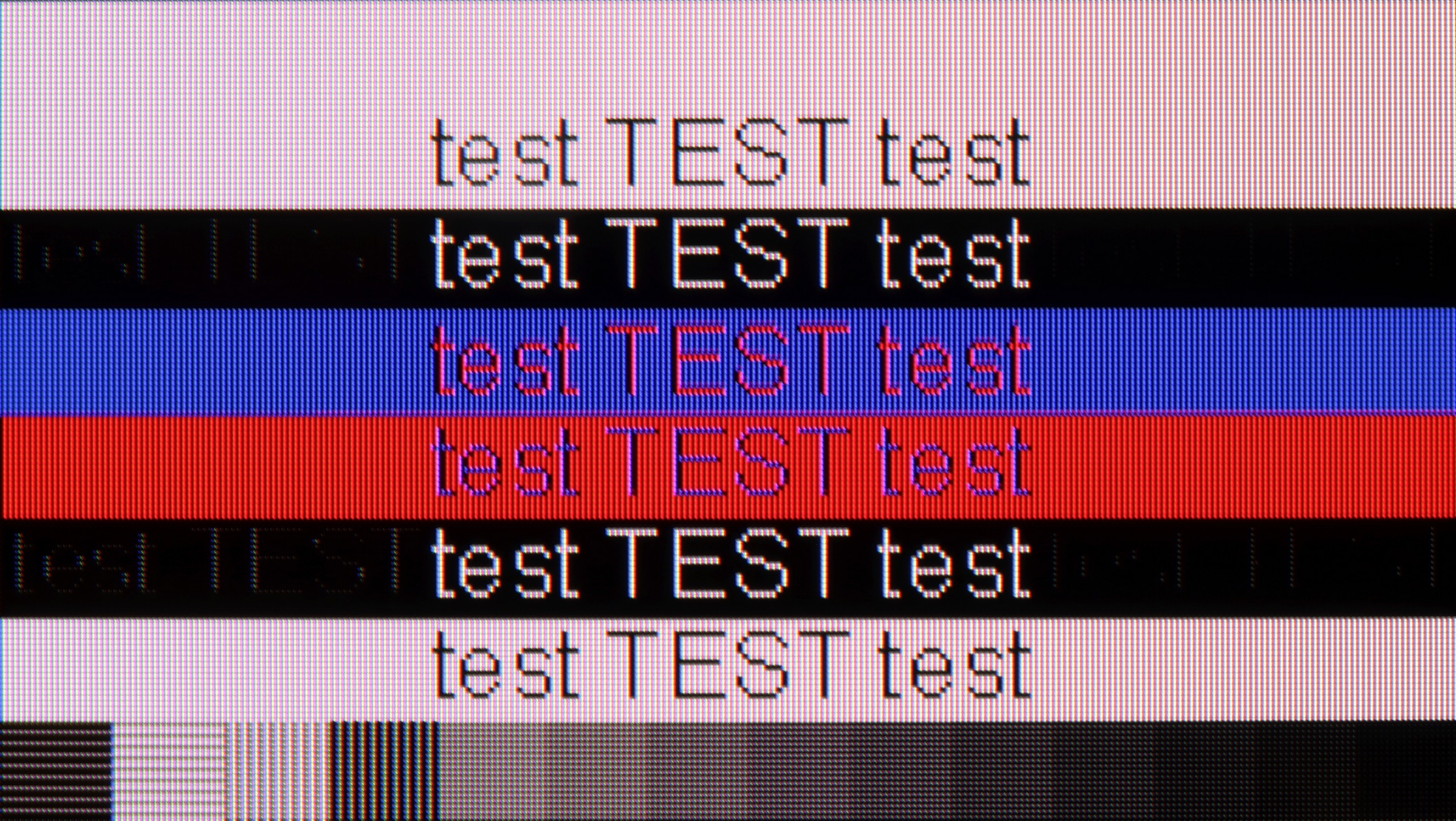
Samsung Q80D performs well as a computer monitor. With support for chroma 4:4:4 (only works in "Game" mode), text on the screen is sharp and readable, which is very important for those who want to work on such a TV with text documents or spreadsheets. One of the biggest advantages of this model is its exceptionally low input lag in “PC” mode, which is only 9 ms. This is a reference-level result that ensures smoothness and responsiveness, which is crucial for both gamers and video editing professionals. The only thing we can nitpick is that there is a certain issue with font rendering on dark backgrounds. When we zoom in on the tested font image, we notice that the horizontal lines are darker compared to the vertical ones. This means that the sub-pixels in the TV do not fully illuminate in this case. This could be due to an oversight by the manufacturer regarding the optimisation of the algorithm responsible for displaying thin lines, which affects the quality of details in text rendering on dark backgrounds. Nevertheless, Samsung Q80D is a very good choice as a PC monitor.
The QN85F performs really well in terms of collaboration with computers. Thanks to the PC mode with a refresh rate of up to 144 Hz, support for G-Sync, and low input lag, gaming on a personal computer is very enjoyable and should not cause frustration even for more demanding gamers. The readability of the fonts is also good – the TV supports 4:4:4 chroma, so standard texts look sharp and clear. The problem only arises with very thin letters. Regardless of the refresh rate setting – whether it’s 144, 120, or 60 Hz – horizontal, thin lines were poorly visible. Reducing the refresh rate slightly improved the situation, but never to the point where one could say they were displayed perfectly.
Viewing angles
3/10
3.2/10
Samsung Q80D, equipped with a VA panel, unfortunately doesn't perform well with viewing angles. When we watch the screen at a 45-degree angle, there is a noticeable loss of brightness. The image becomes less sharp, which can be problematic if we plan to watch TV from different spots in the room. However, the VA panel has its advantages. When we look directly at the screen, black is deep and well-saturated. Moreover, even at an angle, dark colours retain their depth, which is rare for this type of panel.
The viewing angles on the QN85F are the classic Achilles' heel of most LCD TVs with VA panels. When looking at the screen from an angle, the drop in brightness becomes apparent quite quickly, with whites starting to grey and colours losing their intensity. This is the price to pay for the high contrast that this technology offers. Samsung could have opted for a better coating to enhance viewing angles in this model, but it is not present here. In practice, this means that the best viewing experience will be obtained when sitting directly in front of the television, and any significant deviation will result in a noticeable loss of picture quality.
TV efficiency during daytime
6/10
6.9/10

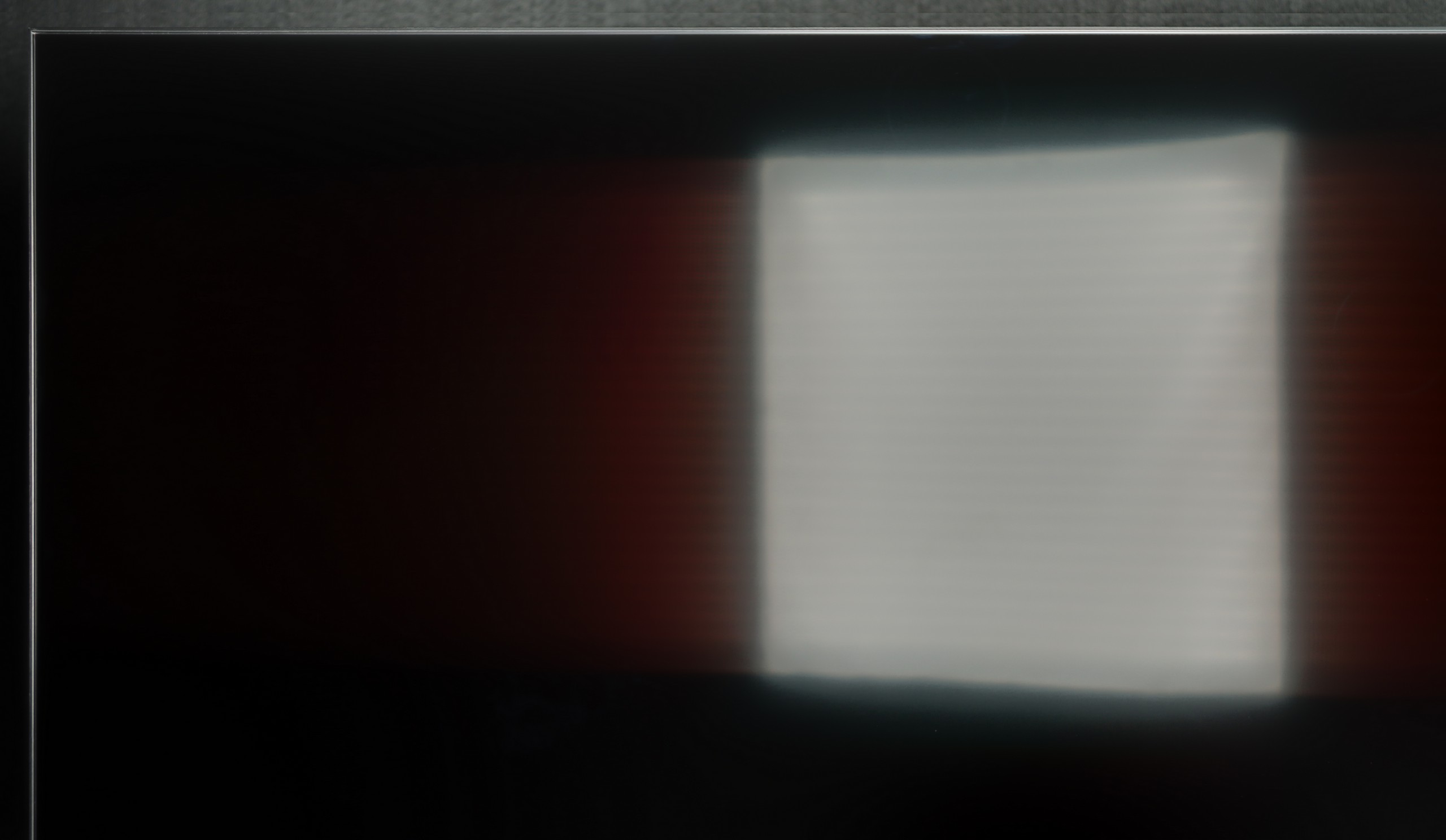


Matrix brightness
Average luminance SDR
Samsung QN85F : 690 cd/m2
Samsung QLED Q80D: 550 cd/m2
The Samsung Q80D television stands out with very good brightness, averaging 550 nits, which is an impressive result, especially as it maintains this brightness across the entire surface of the screen. As a result, the picture is sharp and clearly visible even in bright rooms, which is a big plus when watching television during the day. However, despite the matte coating on the panel, the television struggles somewhat with glare suppression. In bright lighting conditions, unwanted reflections can occur, which may disrupt viewing comfort. This is particularly noticeable when there are light sources in the room that directly hit the screen.
QN85F performs exceptionally well during the day. The satin finish of the screen combined with high brightness makes it a television designed for bright rooms. Colours do not lose their intensity, and the image does not wash out even when a lot of light floods in. The television itself is bright enough to handle a lounge with large windows facing south. Therefore, the QN85F gives us an image that allows us to watch movies or matches during the day without annoying reflections and the feeling that the picture disappears in the sunlight.
Details about the matrix
Subpixel Structure:

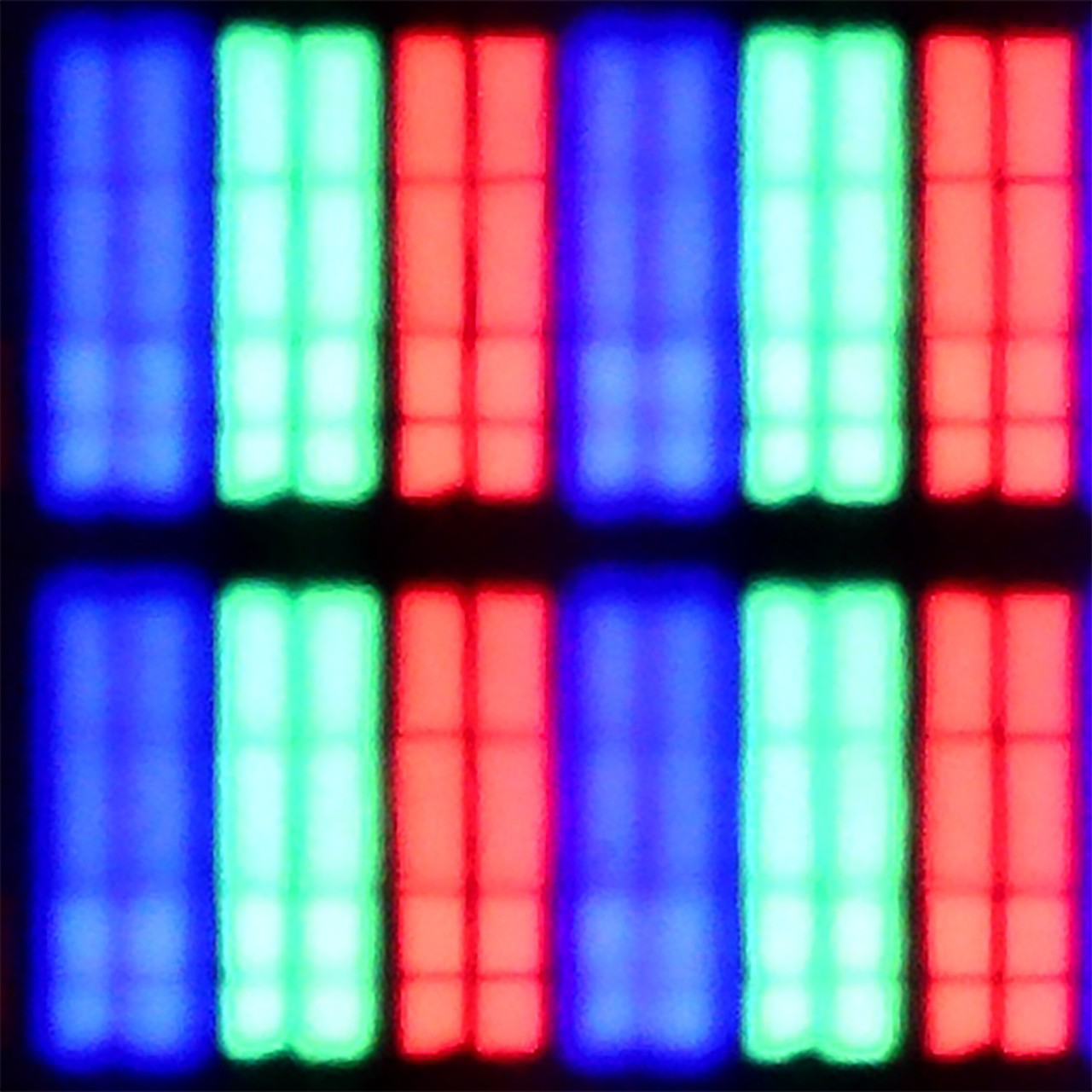
Panel uniformity and thermal imaging:


Samsung QLED Q80D
Samsung QN85F
TV features
8/10
7.3/10
- HDMI inputs0 x HDMI 2.0, 4 x HDMI 2.1 48Gbps0 x HDMI 2.0, 4 x HDMI 2.1 48Gbps
- OutputsToslink (Optical audio), eARC (HDMI), ARC (HDMI)Toslink (Optical audio), eARC (HDMI), ARC (HDMI)
- Network InterfacesWi-Fi 2.4GHz, Wi-Fi 5GHz, Ethernet (LAN) 100MbpsWi-Fi 2.4GHz, Wi-Fi 5GHz, Ethernet (LAN) 100Mbps
- TV receptionDVB-T, DVB-T2, DVB-S, DVB-S2, DVB-CDVB-T, DVB-T2, DVB-S, DVB-S2, DVB-C
Classic features:
- Recording to USB (terrestrial TV)
- Recording programming
- Picture in Picture (PiP)
- RF remote control (no need to aim at the screen)
- Backlit remote control
- Teletext
- Audio only mode
- Bluetooth headphones support
- Simultaneous Bluetooth headphones & TV audio
Smart features:
- AirPlay
- Screen mirroring (Windows Miracast)
- Voice search
- Voice search in native language
- Ability to connect a keyboard and mouse


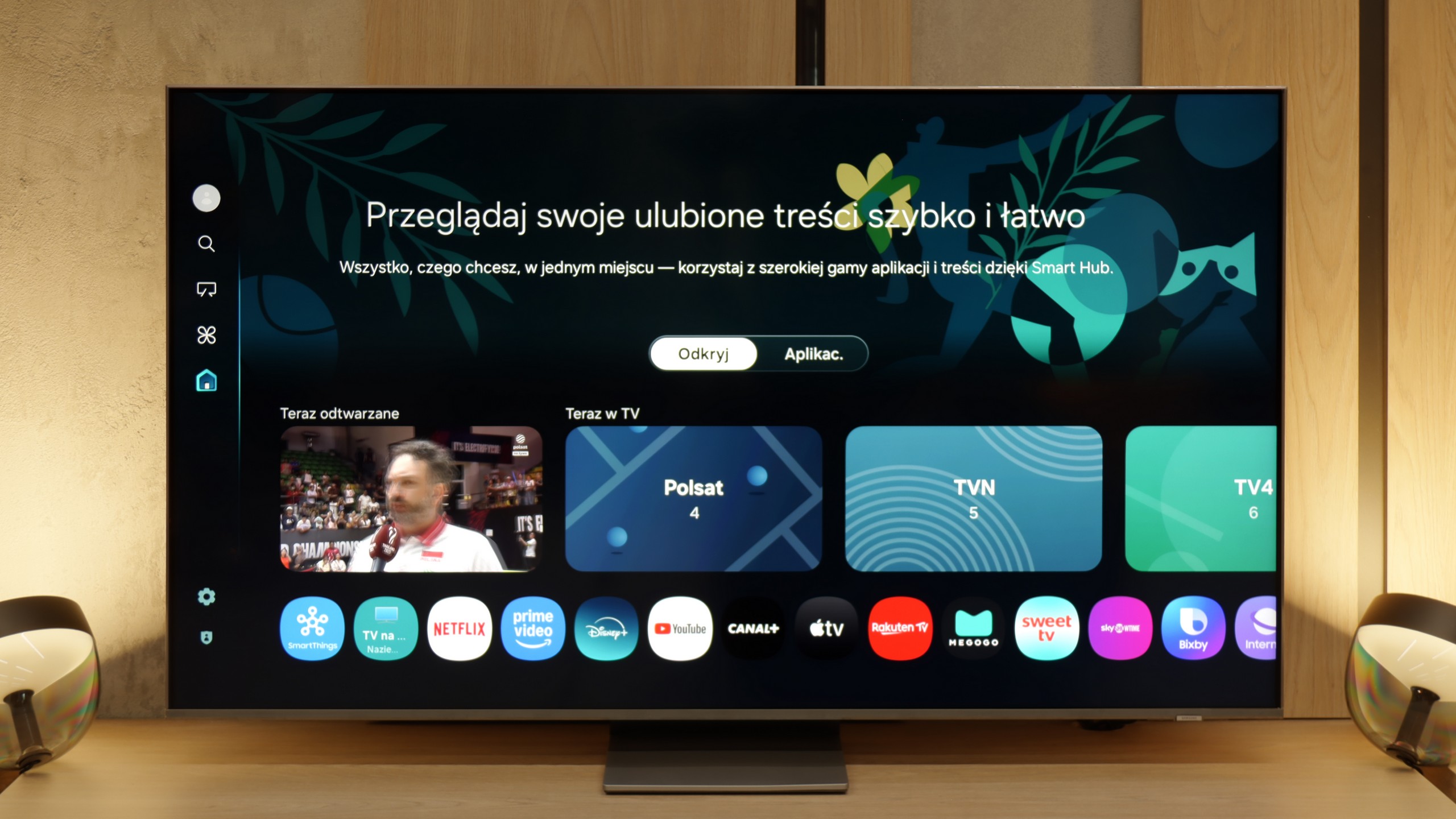
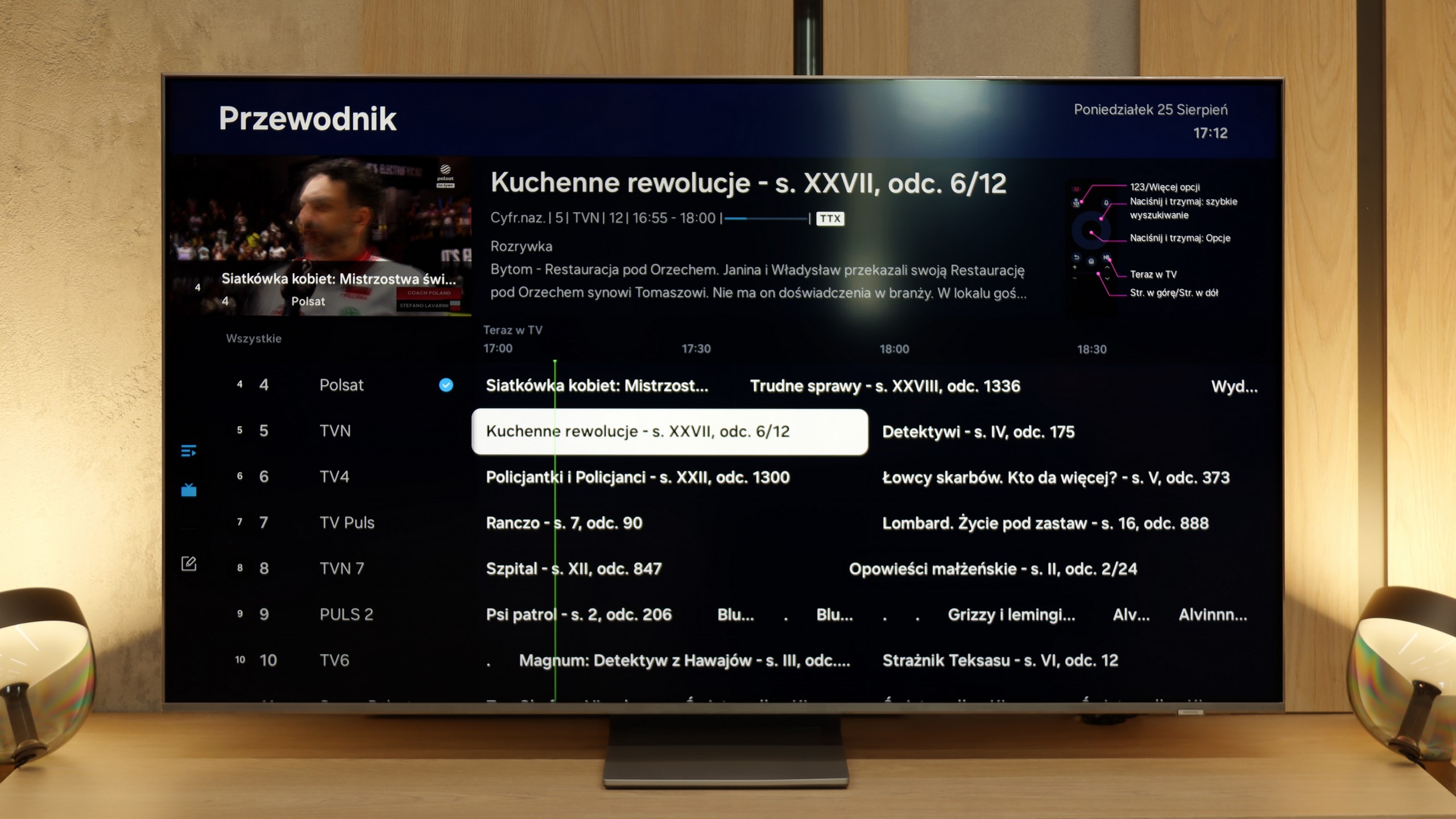
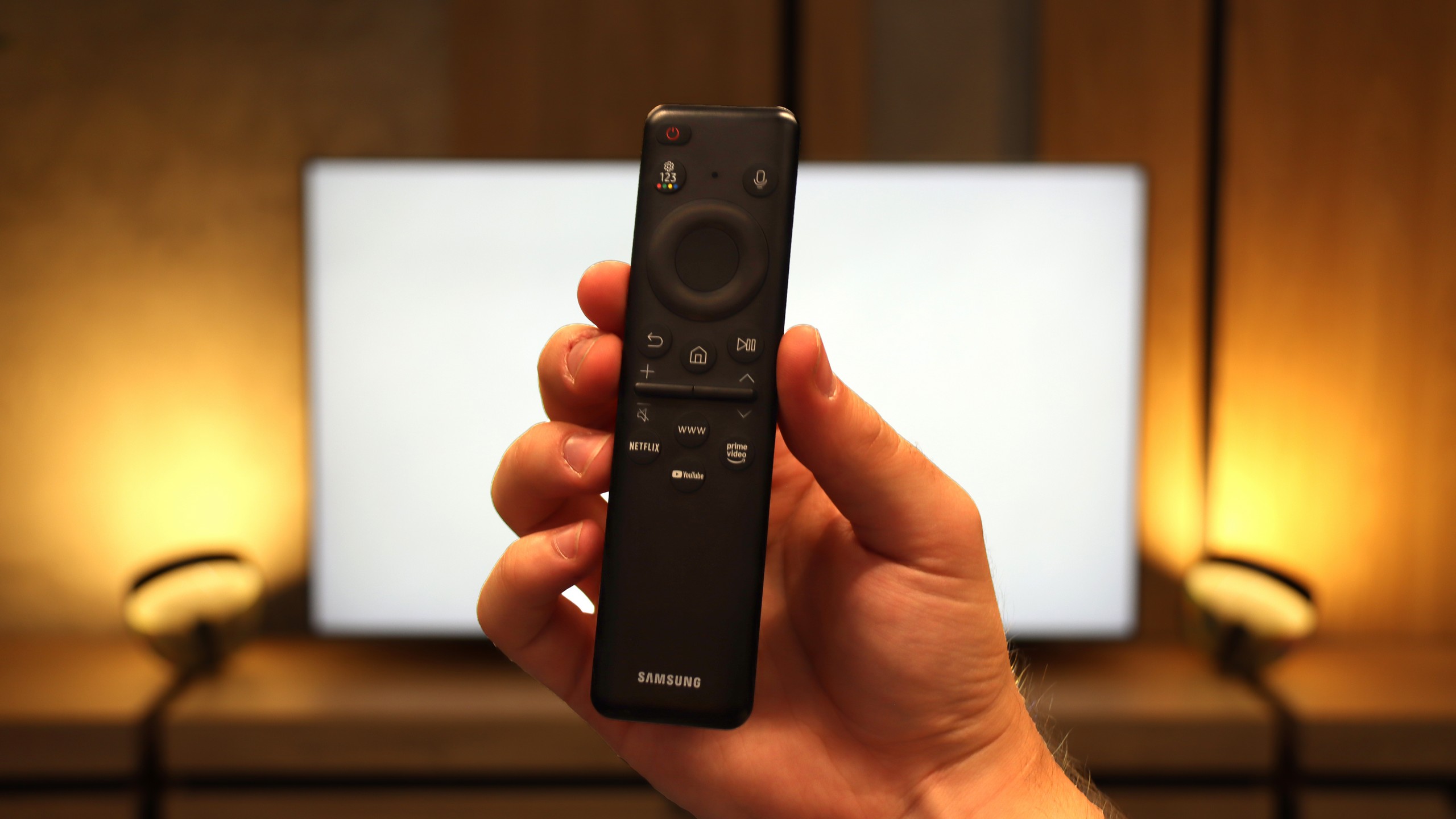
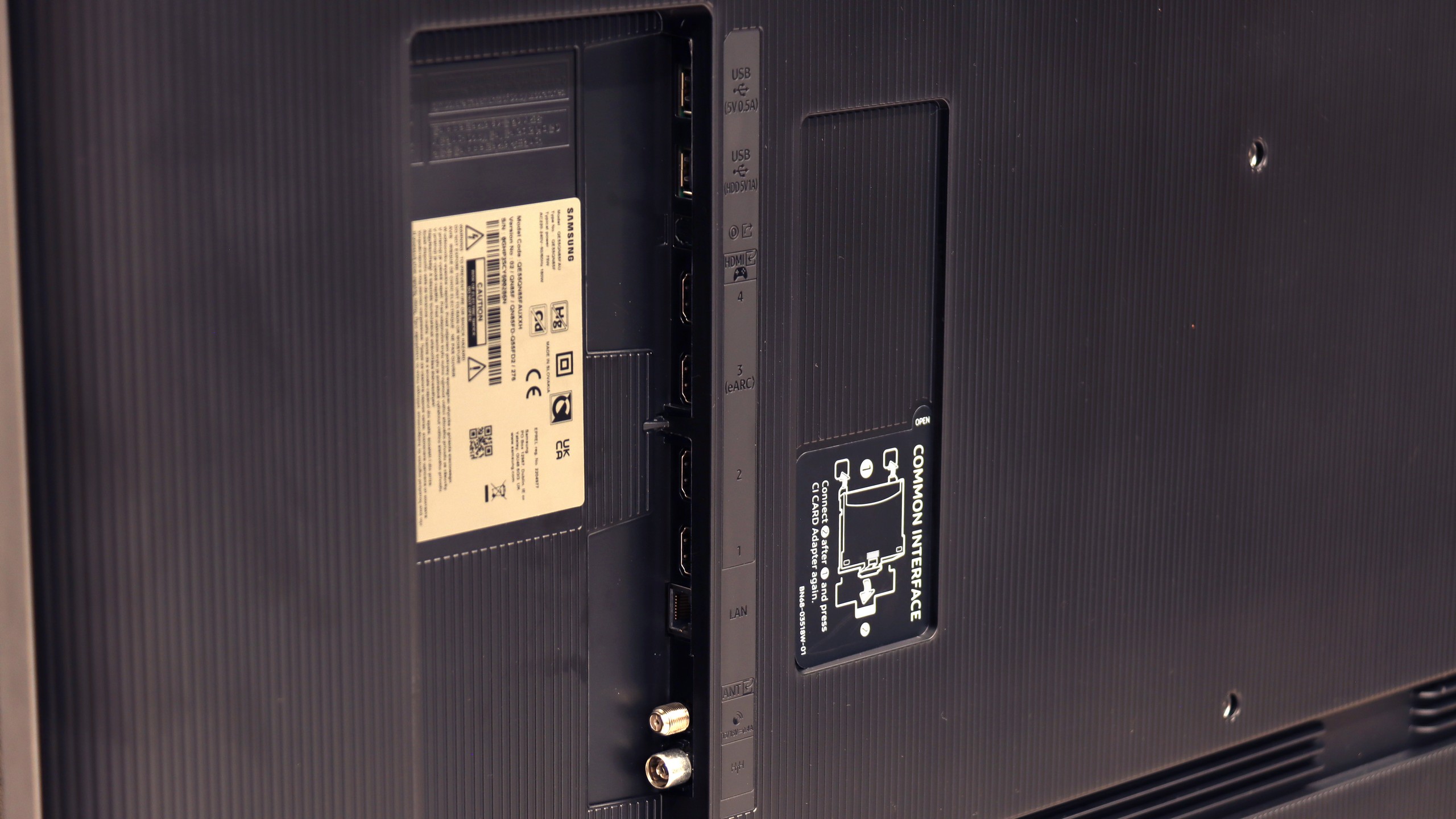
The Samsung Q80D television offers a range of features that significantly enhance user comfort. The Tizen system is an advanced platform that provides users with an intuitive and smooth experience. Thanks to its user-friendly interface, navigating through apps and settings is quick and easy. Tizen supports a rich set of applications, including popular streaming services, allowing access to a wide range of entertainment content without the need for additional devices, and a new feature for 2024 is support for the Polish language. It's also worth mentioning the solar remote control, which is not only eco-friendly but also convenient for everyday use. The solar cell remote can easily control other devices such as home theatres, set-top boxes (e.g., Canal+), or gaming consoles, which is quite a challenge for other manufacturers. Returning to the console, Samsung Q80D offers several features that gamers may appreciate. Firstly, the television supports VRR (Variable Refresh Rate) technology, which enables smoother game display, eliminating issues like tearing and stuttering. Additionally, with low input lag, reactions in games are quick and precise. The Samsung Q80D is also equipped with a Game Bar feature, which allows quick access to key gaming settings without the need to exit the game. From this interface, we can check and adjust parameters like VRR, input lag, frames per second (FPS), as well as screen ratios and sound settings. This means gamers can continuously optimise their experience by adjusting settings according to their current gaming needs. The television supports AirPlay, allowing easy content sharing from Apple devices, and enables connection to various Bluetooth devices such as mice or headphones, increasing its versatility. The only downside is the lack of USB recording support and the fact that the Q80D unfortunately does not support the DTS sound format. This means that if we have content encoded in this format, the device will not be able to properly play back the audio track. This could pose a problem for those using Blu-ray discs or media files that often utilise DTS to provide high-quality surround sound. To achieve complete audio experiences, it may be necessary to use an external player or soundbar that supports this format.
Smart TV and Tizen System
Samsung QN85F runs on its proprietary operating system Tizen, which has long been one of the strongest points of the Korean manufacturer. The platform operates quickly, is well-developed and provides access to virtually all the necessary applications. Here we have AirPlay support, screen mirroring, voice search, and a very clear interface. Everything is controlled by a remote with a minimal number of buttons, designed to give us quick access to the most important applications.
Classic TV Features
When it comes to classic television features, the QN85F offers a rather basic set. The EPG interface is clear and easy to use, resembling a traditional teletext programme list. A downside is the lack of USB recording and the absence of PiP functionality, which Samsung has offered in many other models. This is because the QN85F uses single tuners. For some people, this may be a disadvantage, but considering how few viewers today use traditional linear television, it won’t matter much to most users.
SmartThings and Device Support
A strong element of the entire platform is the SmartThings app. Thanks to it, we can integrate the TV with other smart home devices – not just those from Samsung. We can connect smart lighting like Philips Hue or Yeelight, video intercoms, and many other devices to the system. SmartThings also allows us to control the TV without using a traditional remote – we can use the app on our smartphone, mouse mode, or gesture control if we have a Samsung watch. This makes the QN85F a part of a larger ecosystem and fits perfectly into the trend of smart IoT homes.
Playing files from USB
9.1/10
9.1/10
Supported photo formats:
Maximum photo resolution:

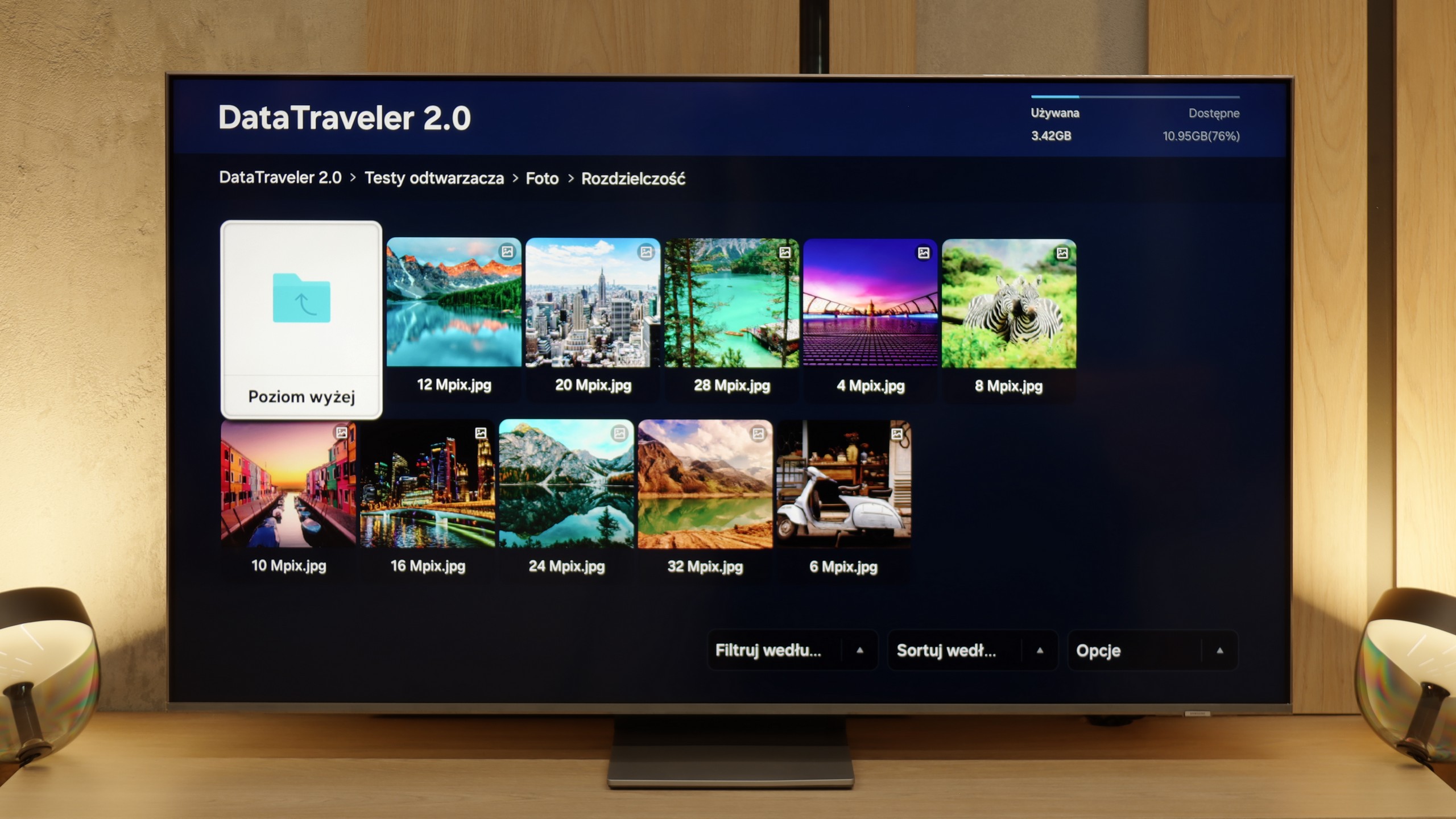
The built-in player in the Samsung Q80D television is definitely one of its strong points. It handles almost all video and audio files that we tested exceptionally well. The only exceptions are the Dolby Vision format, which is not surprising, and less common codecs. On the plus side, it supports Polish characters and offers the ability to customise font colours. On the downside, the TV struggles a bit with photo formats, as it only supports JPEG among the popular ones, while lacking support for formats like PNG or Apple HEIC.
The player in the QN85F works as most people expect, supporting practically all popular formats and is comfortably sufficient even for more demanding users. Movies, music, photos – everything runs without any issues. The only hiccup occurs with HEIC files, which are photos from Apple devices. According to the specifications, they should work, but in practice, they simply do not open. Thumbnails are visible, but the file itself refuses to launch. This looks like a common software bug. Aside from that one case, the player performs correctly and gives no reasons for complaints.
Apps
8.7/10
8.7/10














































Sound
6.6/10
7.6/10
- Maximum volume-84dB
- Dolby Digital Plus 7.1
- Dolby True HD 7.1
- Dolby Atmos in Dolby Digital Plus (JOC)
- Dolby Atmos in Dolby True HD
- DTS:X in DTS-HD MA
- DTS-HD Master Audio
The Samsung Q80D television is equipped with a decent audio system with a power of 40W in a 2.2 configuration, providing quite good sound experiences. This system supports all popular Dolby codecs, allowing for the use of advanced audio formats during movie watching or gaming. However, it is worth noting one drawback: the television does not support DTS functionality. Nonetheless, the lack of this feature can be bypassed by connecting an external audio system, which can significantly improve sound quality and provide a more immersive audio experience. Additionally, Samsung offers a wide portfolio of soundbars that can be integrated with the television, as well as the Q-Symphony system, which allows for sound synchronization between the television and soundbar.
The Samsung QN85F is equipped with a 2.2 system with a power output of 40 W, and it performs really well for built-in speakers. The bass is pleasant, and the dialogue is clear and easy to hear even during louder scenes. Even at maximum volume, the TV doesn't experience any unwanted vibrations, and nothing rattles. At the bottom of the cabinet, there is a woofer responsible for the bass – therefore, when installing, it's important to ensure it isn't obstructed.
As for formats, the QN85F does not support DTS:X audio, which for Samsung has been a standard for several years now and forces Blu-ray enthusiasts to connect audio devices first to the home theatre system and then to the TV. However, in return, we get support for the more popular Dolby Atmos format, which can add extra depth to the sound of movies and series.
Acoustic Measurements
No acoustic data
84dBC (Max)
75dBC


